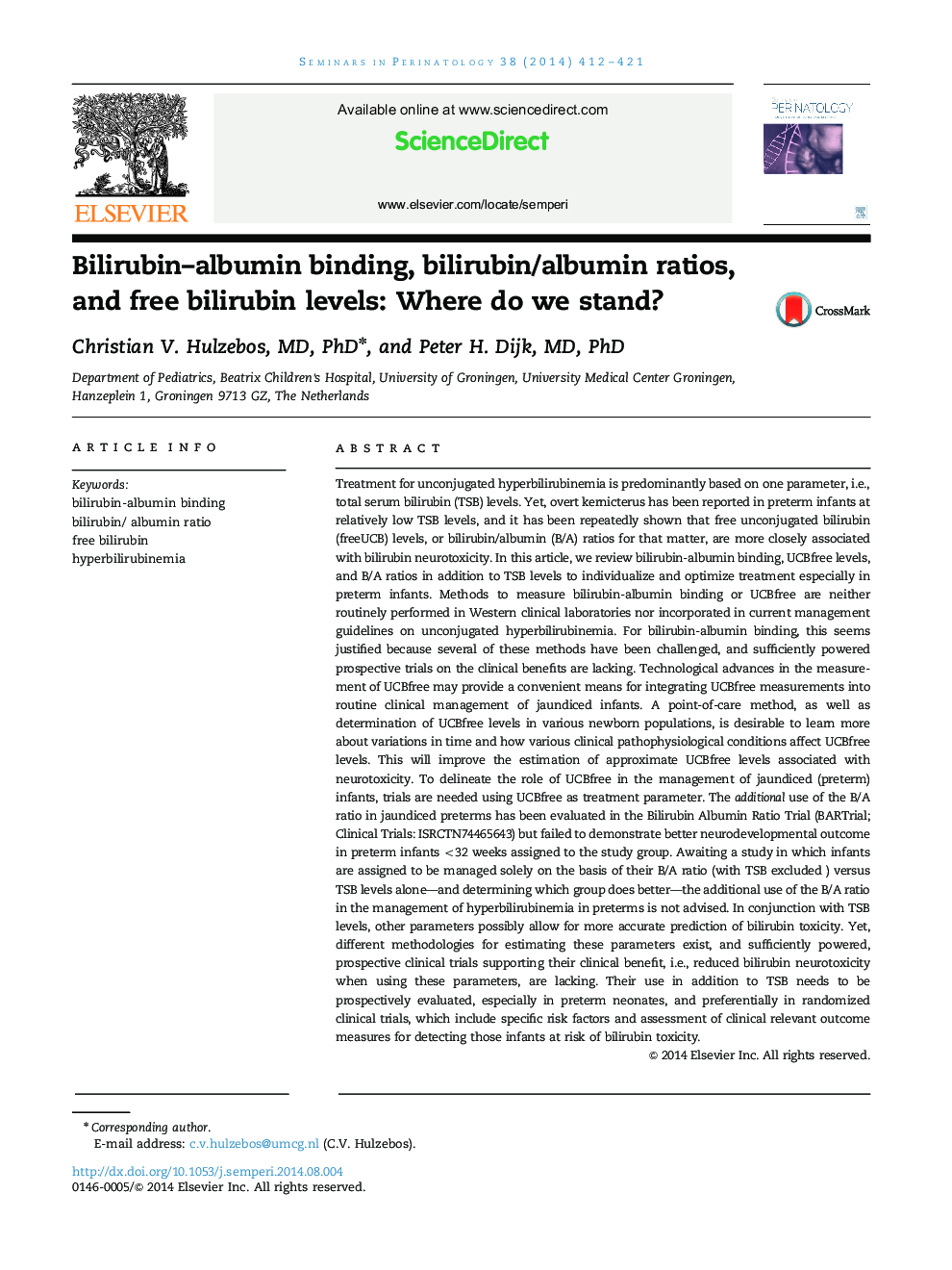| کد مقاله | کد نشریه | سال انتشار | مقاله انگلیسی | نسخه تمام متن |
|---|---|---|---|---|
| 3836378 | 1247536 | 2014 | 10 صفحه PDF | دانلود رایگان |
Treatment for unconjugated hyperbilirubinemia is predominantly based on one parameter, i.e., total serum bilirubin (TSB) levels. Yet, overt kernicterus has been reported in preterm infants at relatively low TSB levels, and it has been repeatedly shown that free unconjugated bilirubin (freeUCB) levels, or bilirubin/albumin (B/A) ratios for that matter, are more closely associated with bilirubin neurotoxicity. In this article, we review bilirubin-albumin binding, UCBfree levels, and B/A ratios in addition to TSB levels to individualize and optimize treatment especially in preterm infants. Methods to measure bilirubin-albumin binding or UCBfree are neither routinely performed in Western clinical laboratories nor incorporated in current management guidelines on unconjugated hyperbilirubinemia. For bilirubin-albumin binding, this seems justified because several of these methods have been challenged, and sufficiently powered prospective trials on the clinical benefits are lacking. Technological advances in the measurement of UCBfree may provide a convenient means for integrating UCBfree measurements into routine clinical management of jaundiced infants. A point-of-care method, as well as determination of UCBfree levels in various newborn populations, is desirable to learn more about variations in time and how various clinical pathophysiological conditions affect UCBfree levels. This will improve the estimation of approximate UCBfree levels associated with neurotoxicity. To delineate the role of UCBfree in the management of jaundiced (preterm) infants, trials are needed using UCBfree as treatment parameter. The additional use of the B/A ratio in jaundiced preterms has been evaluated in the Bilirubin Albumin Ratio Trial (BARTrial; Clinical Trials: ISRCTN74465643) but failed to demonstrate better neurodevelopmental outcome in preterm infants <32 weeks assigned to the study group. Awaiting a study in which infants are assigned to be managed solely on the basis of their B/A ratio (with TSB excluded ) versus TSB levels alone—and determining which group does better—the additional use of the B/A ratio in the management of hyperbilirubinemia in preterms is not advised. In conjunction with TSB levels, other parameters possibly allow for more accurate prediction of bilirubin toxicity. Yet, different methodologies for estimating these parameters exist, and sufficiently powered, prospective clinical trials supporting their clinical benefit, i.e., reduced bilirubin neurotoxicity when using these parameters, are lacking. Their use in addition to TSB needs to be prospectively evaluated, especially in preterm neonates, and preferentially in randomized clinical trials, which include specific risk factors and assessment of clinical relevant outcome measures for detecting those infants at risk of bilirubin toxicity.
Journal: Seminars in Perinatology - Volume 38, Issue 7, November 2014, Pages 412–421
